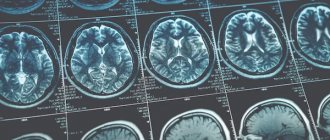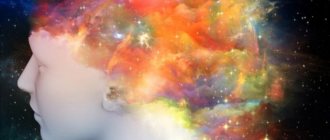General information
Cerebral angiodystonia is a functional pathology, which is characterized by changes in the venous and arterial tone of cerebral vessels, as well as a decrease in their adaptive abilities. Cerebral angiodystonia is formed as a result of a violation of nervous vascular regulation, which leads to:
- venous congestion in the brain;
- insufficient blood supply to the brain.
Cerebral angiodystonia of cerebral vessels is a functional disorder in which the arteries and veins remain morphologically intact - there are no signs of thrombosis or atherosclerosis .
Angiodystonia of cerebral vessels occurs in 1.7% of the population. Every third patient suffering from pathology is of working age. The main danger lies in the fact that the disease can complicate diagnosis and mask the clinical picture of serious diseases of the cardiovascular and central nervous systems.
Retinal angiodystonia is a disease that affects the vessels supplying the bottom of the eyeball. Pathology can develop at any age. One option is spastic angiodystonia of the retina, which develops as a result of prolonged spasm of the venous and arterial network of the fundus.
Mechanism of development and causes of the disorder
Angiodystonia does not appear as an independent disorder in the functioning of cerebral vessels.
It “accompanies” existing diseases. It is not at all necessary that it will be associated with brain activity, the nervous system or the psychological characteristics of a person. Sometimes the mechanism of development of cerebral angiodystonia is triggered due to the fact that:
- there are disturbances in the gastrointestinal tract;
- allergic reactions;
- overwork and stressful situations;
- hormonal disruptions or changes (relevant during adolescence and menopause).
The disease does not develop immediately, so not every person can understand in a timely manner that violations are occurring.
In order to better understand the causes of the disease, you should know that a disorder in the blood vessels is divided into primary and symptomatic (a response to another disorder in the body).
The main causes and factors triggering cerebral angiodystonia:
- disturbances in the functioning of the endocrine system;
- disruptions in the autonomic nervous system;
- amyloidosis;
- various types of gastrointestinal disorders;
- diseases and disorders of the central nervous system;
- pancreatitis;
- concussions of varying severity;
- physical inactivity;
- varicose veins;
- Addison's disease;
- increased ICP;
- presence of bad habits (especially long-term smoking);
- increased irritability;
- impressionability;
- age-related features (hormonal imbalance).
It is also important to remember that the disease also develops under the influence of external unfavorable circumstances, among which in the first place is poor nutrition, as well as constant stress on the nervous system. If these factors exist, then it is best to get examined by a doctor.
Classification
Based on its origin, cerebral angiodystonia is divided into:
- Primary form. It is an independent disease, also known as neurogenic angiodystonia.
- Symptomatic form. Changes in vascular tone are the result or complication of an underlying pathology, for example, arterial hypertension .
By localization they distinguish:
- Local form. The affected area has a clear localization and is limited.
- Diffuse or systemic form. Changes are observed in all areas of the brain.
With the flow:
- Crisis angiodystonia. The paroxysmal form is characterized by a periodically occurring sharp deterioration in well-being against the background of complete well-being.
- Constant angiodystonia. Cerebral circulatory disorders are persistent and persistent.
Type:
- Hypertensive type. Develops against a background of constantly elevated blood pressure. The development mechanism is associated with vasospasm, which develops against the background of contraction of smooth muscle tissue in the vascular wall, and leads to a narrowing of the lumen of the vessel, which negatively affects blood circulation.
- Mixed type. It is formed as a result of instability of the condition of the walls of blood vessels, which alternately contract and relax. Pathology is directly related to the psychophysiological state of the patient.
- Hypotonic type. Develops in people with low blood pressure - hypotension.
It is characterized by a relaxed state of the vascular wall and an increase in the lumen of arteries and veins.
According to the degree of severity, which is determined by the clinical picture of vascular pathology:
- mild form of dystonia;
- moderate angiodystonia;
- a pronounced form of cerebral anhidystonia.
Causes
The main factors and pathologies that lead to the development of cerebral vascular anhidystonia:
- impaired regulation of the autonomic nervous system;
- endocrinological diseases: hypothyroidism ; pheochromocytoma ; diabetes ; hyperthyroidism ;
- neuroinfections: encephalitis , meningoencephalitis , meningitis ;
- acute or chronic form of intoxication: hangover syndrome; food poisoning ; poisonous gas intoxication; consumption of alcohol, drugs, nicotine;
- long-term consequences of traumatic brain injury;
- pathology of internal organs;
- psycho-emotional disorders associated with neuropsychic overstrain, prolonged stress, lack of sleep;
- occupational pathology (exposure to loud noise, vibration disease);
- hypertonic disease.
In children, the disease develops against the background of a congenital pathology of the central nervous system. Quite often, the pathology of vascular tone is associated with psychosomatics. The lack of skills to get rid of neuropsychic stress, an unconstructive approach to solving the problem (addictive behavior or abuse of alcoholic beverages) leads to chronic stress, which negatively affects the functioning of the autonomic nervous system.
Symptoms
The clinical picture of cerebral angiodystonia is nonspecific. Characteristic signs of pathology:
- Mental and emotional disorders that manifest themselves: memory impairment; excessive fatigue; mood lability; superficial sleep; absent-mindedness; decreased interest in events happening around; lack of hobbies and any interest; complete apathy; increasing time to fall asleep.
- Autonomic disorders in the form of: instability of blood pressure ; rhythm disturbances and shortness of breath; feeling of rapid heartbeat .
The clinical picture is formed from several syndromes. The predominance of a particular syndrome depends on the condition of a particular organ or system (congenital or acquired pathology). For example, with congenital heart disease, it is cardiac neurosis .
Syndromes that accompany cerebral angiodystonia:
- Cardialgic syndrome. Patients complain of retrosternal pain in the heart area of a burning, aching, bursting nature. The pain syndrome is more pronounced in the area of the apex of the heart and is short-term in nature (from several minutes to 1 hour). The pain attack stops on its own when the patient is distracted. The syndrome is accompanied by feelings of anxiety, fear, agitation and shortness of breath.
- Breathing syndrome. Occurs in 85% of patients suffering from angiodystonia. Characteristic symptoms: feeling of lack of air; discomfort along the upper respiratory tract and discomfort in the lungs.
The paroxysmal (crisis) form of angiodystonia includes 3 types of crisis:
- Sympathoadrenal crisis. Characterized by the following symptoms: instability of blood pressure; sudden feeling of fear or anxiety; increased body temperature; dryness and pallor of the skin; sudden headache of aching nature with a feeling of pulsation; feeling of rapid heartbeat; tremor, trembling in the limbs. The crisis ends with general weakness, and in some cases, excessive urination.
- Parasympathetic crisis . Characteristic symptoms: dizziness; decreased blood pressure; bursting headache; excessive moisture of the skin; dyspnea; decreased heart rate.
- Mixed crisis. Symptoms of sympathoadrenal and parasympathetic crises are characteristic.
According to severity they are distinguished:
- Easy. The duration of the attack is no more than 20 minutes and is manifested by one separate syndrome.
- Average. The duration of the attack is 20-60 minutes, manifested by two syndromes. After the crisis, exhaustion is noted, which can last 1-2 days.
- Heavy. The attack lasts more than 1 hour and is manifested by 2 or more syndromes. Convulsive seizures and severe autonomic dysfunction are characteristic. After an attack, exhaustion can last 2-3 days, and the ability to work is significantly reduced.
The clinical picture of angiodystonia depends on the form of pathology:
- Hypertensive type. The disease occurs as a dyscirculatory encephalopathy and is characterized by a pronounced decrease in some psychophysiological indicators (pace of thinking, memory, attention, speed of reactions). The clinical picture is manifested by specific autonomic disorders: noticeable pulsation of the vessels of the head and neck; extrasystolic arrhythmia ; increase in heart rate at rest and during excitement.
- Hypotensive type. Registered when systolic blood pressure decreases below 100 mm Hg. Art. Characteristic autonomic disorders: tendency to faint (loss of consciousness is associated with insufficient blood supply to the brain); chilliness of the limbs. Patients have pale skin, the skin feels moist and cold to the touch. Blood pressure levels normalize with physical activity and decrease at rest. There is a decrease in peripheral vascular tone.
- Angiodystonia with venous dysfunction. The pathology is formed against the background of changes in the tone of the venous vessels of the brain, which leads to venous stagnation. The symptoms of hypertensive-hydrocephalic syndrome are characteristic: increased sensitivity to loud sounds and bright light; irritability ; apathy; aching headache; vomit; nausea.
Tests and diagnostics
Cerebral angiodystonia is a diagnosis of exclusion when, as a result of the examination, functional and organic changes in the vessels of the brain are not detected. Due to the diversity and nonspecificity of the clinical picture, the diagnostic search can take months.
Several specialized specialists take part in the differential diagnosis: cardiologist, neurologist, psychiatrist and endocrinologist. At the initial stage, a family history and heredity of autonomic dysfunction are established: the presence of disorders in the blood circulation of the brain in close relatives. Concomitant pathology is revealed. Often such patients are simultaneously diagnosed with:
- allergic reactions;
- ulcerative lesions of the digestive tract;
- skin diseases;
- bronchial asthma;
- endocrinological pathology;
- rhythm disturbances, arrhythmia .
Instrumental diagnostic methods used for cerebral angiodystonia:
- electrocardiography;
- functional tests;
- CT scan;
- electroencephalography.
Methods of medical correction of the condition: what treatment?
Treatment methods for cerebral angiodystonia are determined by the primary etiology of the disorder and are used in cases of de- or subcompensation of disorders.
Etiotropic (cause-directed) therapy involves the use of antibacterial, hormonal agents, and surgical interventions in a specific case.
Impact on developmental mechanisms (pathogenetic treatment) includes medications:
- antispasmodics - drugs that reduce vascular tone in the hyperconstrictive type;
- painkillers – non-steroidal anti-inflammatory drugs;
- antihypertensives – to correct high blood pressure;
- sedatives (calming) drugs;
- antiarrhythmic drugs for cardiac etiology of dystonia;
- drugs that improve cerebral blood flow (nootropics).
In addition, vitamin complexes and antioxidants are used to nonspecifically improve metabolic processes in nervous tissue.
Prevention and exercises for cerebral angiodystonia
The development and progression of cerebral angiodystonia can be prevented by following simple rules:
- review your diet;
- change your lifestyle;
- to refuse from bad habits;
- do gymnastics and sports.
Exercises for cerebral vessels are aimed at improving venous outflow from the head. Massage of the cervical-collar area and exercises to relieve muscle spasm in the cervical spine are effective. Regular exercises for the blood vessels of the brain have a positive effect on the condition of the vascular wall and overall well-being.
What is cerebral angiodystonia?
Normal blood supply to brain tissue is provided by the system of the internal carotid artery and vertebrobasilar territory (VBP), which arise from the subclavian artery on both sides. Control of the transport of nutrients and oxygen to brain neurons is ensured by autonomous regulatory structures:
- myogenic (muscular) - when blood flow decreases, smooth muscle cells of the vascular wall are activated and cause vasoconstriction (narrowing of the lumen in order to increase blood pressure);
- metabolic – activated when metabolism is disturbed;
- neurogenic.
Angiocerebral dystonia is a violation of the adaptation of the tone of blood vessels (mainly resistive arterioles) of the brain to environmental conditions. The pathology is characterized by a change in the structure of the vascular wall, with damage to muscle tone with the development of persistent spasm or dilatation (expansion of the lumen).
There are three variants of discirculation, which lead to local or systemic circulatory disorders with the development of insufficiency or excess blood flow.
The pathogenesis of the disease is due to the instability of developed reflexes and vasomotor adaptation mechanisms. Dystonia is based on labile autoregulation of vascular tone with the development of spastic or hypokinetic angiopathy.
Classification of cerebral angiodystonia is carried out according to the following criteria:
- etiology: primary (neurogenic) and secondary (symptomatic);
- localization: focal or systemic;
- predominance of pressure levels: normo-, hyper- and hypotension;
- nature of the disorder: persistence or angiodystonic crises.
Dystonia affects both arteries and venous vessels (sometimes in combination), which leads to a characteristic set of clinical signs.










